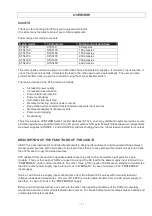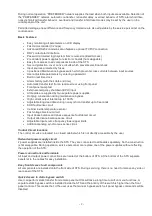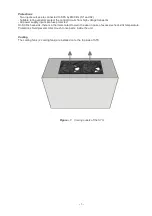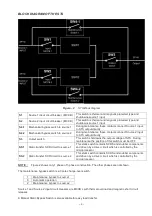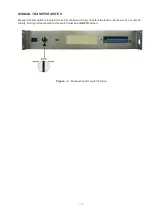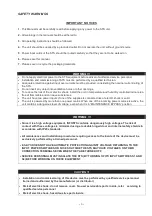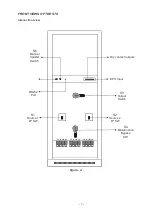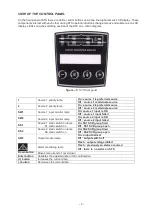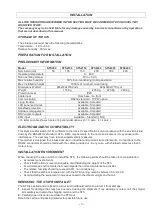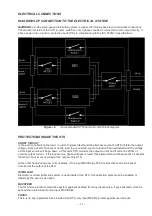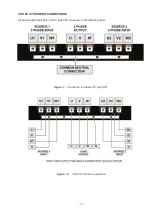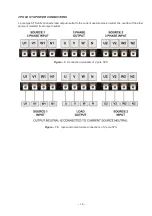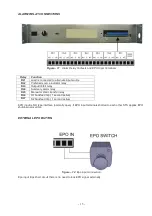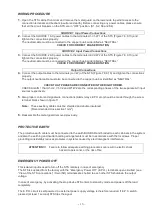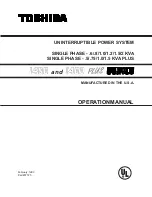
-
1
-
OVERVIEW
InfoSTS
Thank you for choosing
InfoSTS
as your equipment protector.
It includes many features to protect your critical equipments.
Power ranges according to models
4 pole model
3 pole model
Output current per phase
STS450
STS350
50 amperes
STS4100
STS3100
100 amperes
STS4150
STS3150
150 amperes
STS4200
STS3200
200 amperes
STS4300
STS3300
300 amperes
STS4400
STS3400
400 amperes
This unit supplies continuous power to critical loads from 2 separate AC supplies. It monitors 2 input sources, if
one of the input sources fails, it transfers the load to the other input source automatically. The user can also
perform transfer from one source to another using the manual transfer switch.
The main functions of the STS unit are as follows :
•
Increased power quality
•
Increased noise reduction
•
Power blackout protection
•
Power redundancy
•
Automatic static switching
•
Remote monitoring of input power sources
•
Easy static and mechanical transfer between separate input sources
•
Remote management of power events
•
Power event logging
•
Redundancy
Therefore inclusion of INFORM Static Transfer Switches (STS) in an energy distribution system provides secure
protection against any possible faults in the AC power system. STS permits switching between two independent
AC power supplies (SOURCE 1 and SOURCE 2) without shutting down the critical load connected to its output.
DESCRIPTION OF THE FUNCTIONS OF THE InfoSTS
InfoSTS
is a microprocessor controlled transfer switch, designed for automatic and manual switching between
two AC power sources, with interruption to the load of less than 2 msecs with synchronized sources and of less
than 12 msecs for unsynchronized sources.
STS utilizes SCRs connected in opposite parallel pairs (six pairs for 6 pole models ,eight pairs for 4 pole
models) . Three or four pairs of SCRs are used to connect the AC load to the power supply input referred to as
“PREFERRED”, under normal conditions. The other three (of four) pairs of SCRs are on standby to transfer the
load to the other power supply input referred to as “ALTERNATE” in case of a failure of the “PREFERRED”
input supply.
Source 1 and Source 2 supply inputs should come from two different AC sources with nominally identical
voltages, phases and frequencies. The aim of the STS is uninterrupted transfer from one AC power supply to
the other, in case of a fault in the “PREFERRED” supply.
Before and during transfer from one source to the other, the operating conditions of the SCRs are carefully
monitored to prevent crosscurrents between two sources. The break-before-make technique makes healthy and
uninterrupted transfers possible.
Summary of Contents for InfoSTS
Page 45: ...44 Figure 28...
Page 47: ...NOTES...


